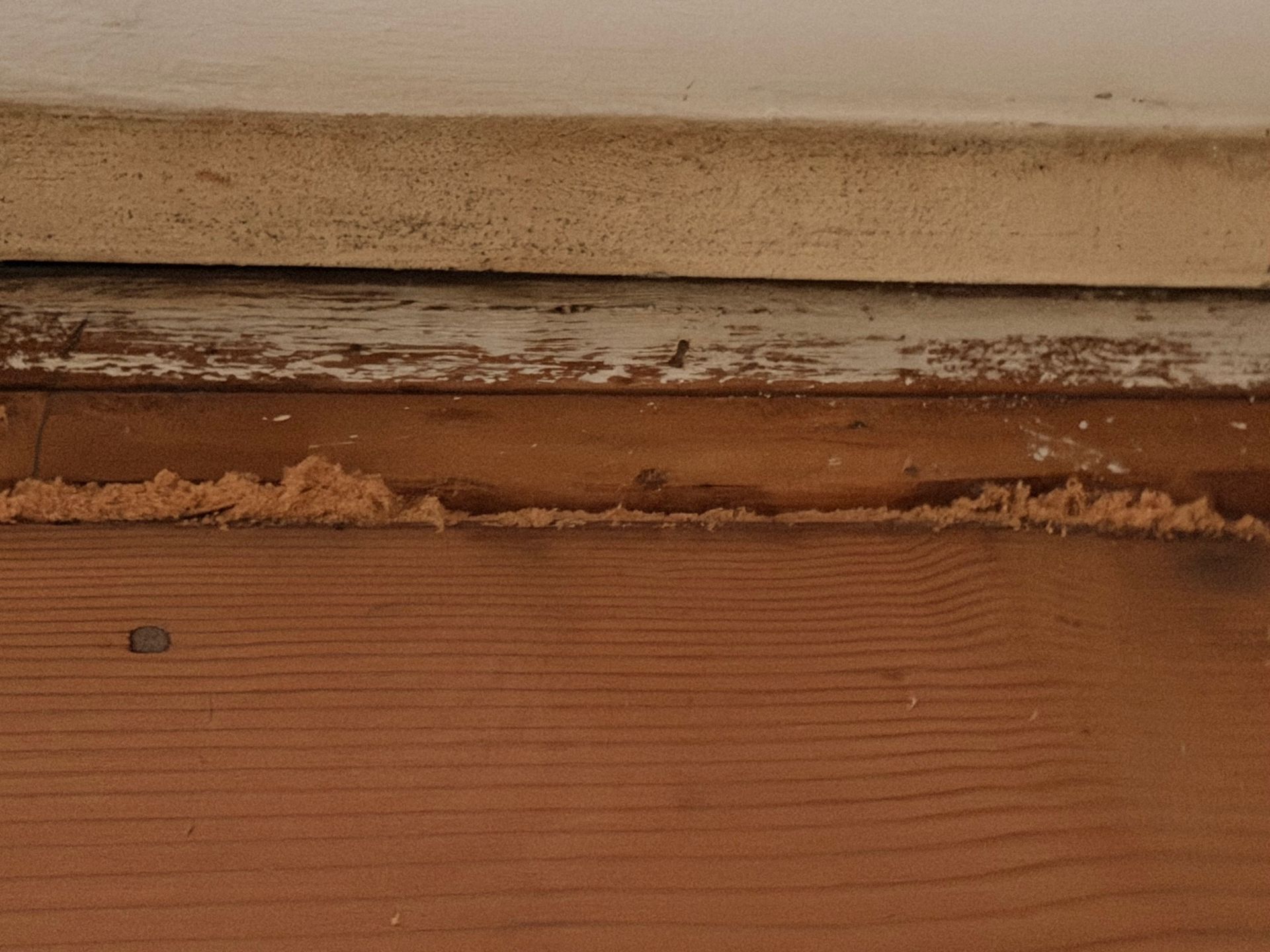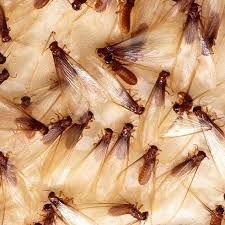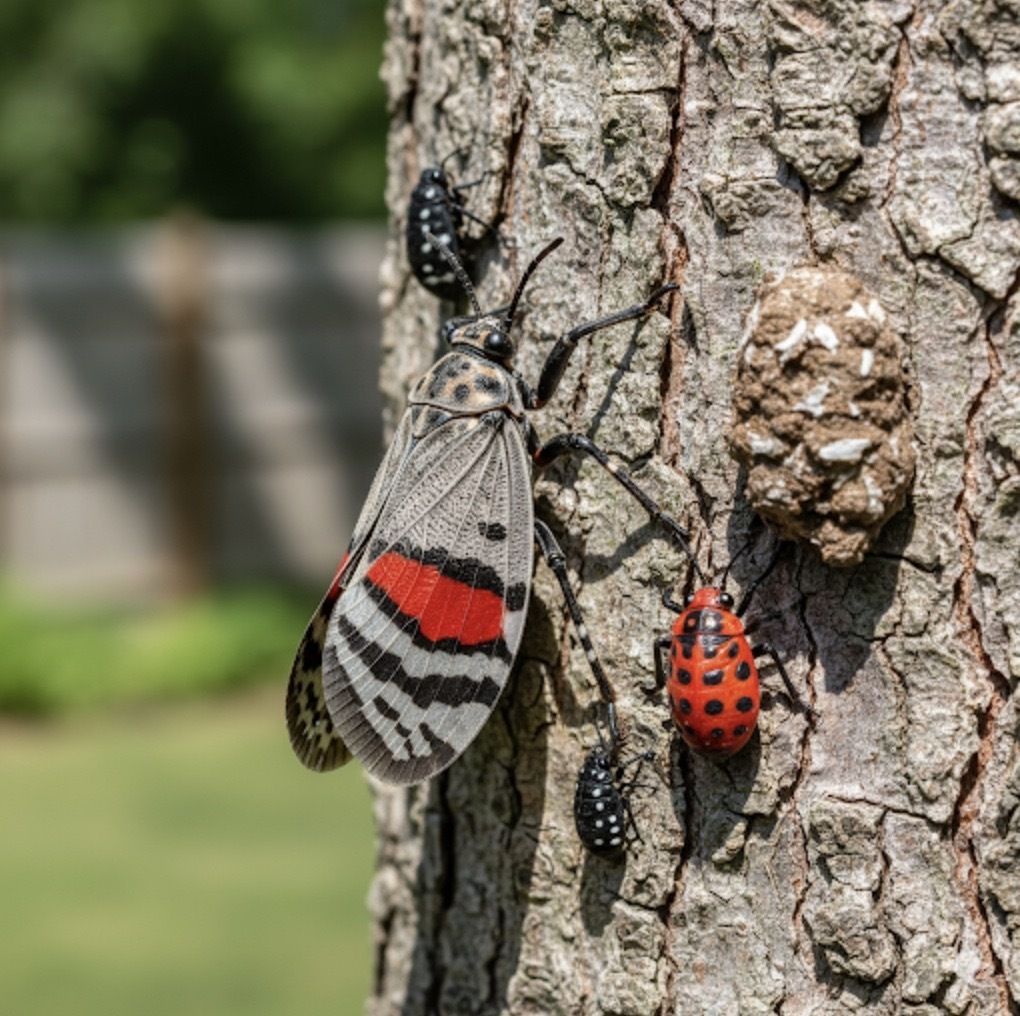Effective Tips for Homeowners Facing Residential Rat Issues – XTERMIGATOR REPORT
Dealing with a rat infestation can be a troubling and daunting task for many homeowners. Rats, including the common roof rats, can cause significant damage to property, contaminate food sources, and spread diseases, making it imperative to address the issue promptly. Understanding how to get rid of rats effectively involves more than just laying traps; it requires a comprehensive approach that includes sanitation, home fortification, and knowing the enemy well. The importance of tackling this problem cannot be overstated, as it impacts not only the structural integrity of homes but also the health and safety of its inhabitants.
This article aims to provide homeowners with effective tips for managing residential rat issues, starting from the initial detection and identification of these pests. It will cover essential strategies such as enhancing home fortification to prevent entry, implementing rigorous sanitation practices to eliminate food sources, selecting and using traps correctly, and the safe use of rodenticides. For those situations that escalate beyond a DIY approach, it will also touch on hiring professional pest control services. Additionally, maintaining consistent prevention measures to ensure a rat-free home will be emphasized, offering a comprehensive guide to those facing rat problems.
Understanding the Enemy: Rats
To effectively manage a rat infestation, homeowners must first understand the characteristics and behaviors of these pests. Rats are distinguished not only by their size but also by their physical features and nesting habits, which vary significantly between species.
Types of Rats
Two primary types of rats commonly encountered in residential areas are the Norway rat (Rattus norvegicus) and the Roof rat (Rattus rattus). The Norway rat, also known as the brown rat or sewer rat, tends to be larger and burrows near building foundations or under debris. In contrast, the Roof rat, also referred to as the black rat or ship rat, is smaller, more agile, and typically nests in higher locations like attics or trees [1].
Norway rats have coarse fur that ranges in color from red to brown or black, and they possess a scaly, fur-less tail. They are substantial in size, with adults averaging between 11 to 19 inches long, including the tail, and weighing about ½ to 1 pound. Roof rats, being sleeker and smaller, have tails longer than their combined head and body length, aiding their ability as proficient climbers [2].
Understanding these characteristics helps in choosing the right control methods and preventing future infestations by addressing the specific needs and behaviors of the rat species involved.
Initial Detection and Identification
Signs of a Rat Problem
Identifying a rat infestation early is crucial for effective management and eradication. Homeowners should be vigilant for the following signs:
1. Fresh Droppings: Look for new, moist droppings that are dark in color. Older droppings tend to be dry and crumble upon touch [3].
2. Gnaw Marks: New gnaw marks are lighter and become darker as they age. These can be found on food packaging and the structure of the house itself [3].
3. Tracks and Runways: Rats create distinct pathways in dust, dirt, or mud. Homeowners can use a thin layer of flour or baby powder to check for tracks in suspected areas [3].
4. Greasy Rub Marks: These marks are left on walls and along pathways where rats travel repeatedly [4].
5. Nesting Materials: Rats use shredded paper, fabric, or dried plant matter to build their nests. These are typically found in hidden areas close to food sources [3].
6. Live or Dead Rats: Seeing rats during the day can indicate a large infestation [5].
Areas to Check
To prevent and control rat infestations, it is essential to know where to look. Key areas include:
Inside the Home: Check behind appliances, in cupboards, and in dark secluded areas where rats may hide during the day [2].
Outside and Around the Building: Inspect the foundation for burrows. Look for holes in the ground and gnaw marks on structures and garbage cans [4].
High Traffic Areas: Common pathways for rats include along walls, fences, and building foundations. Check these areas for signs of runways and rub marks [2].
Regular inspections using these guidelines can help identify rat problems early, making control efforts more effective and potentially less costly. Homeowners should also consider professional inspections if rat signs are observed, as experts can provide a more comprehensive assessment and tailored solutions [5]
Home Fortification
To effectively combat residential rat issues, fortifying the home against these persistent pests is crucial. This involves a two-pronged approach: sealing entry points to prevent access and managing the outdoor environment to reduce attraction and harborage opportunities.
Sealing Entry Points
Rats possess the ability to squeeze through spaces as small as a nickel, making even the smallest openings potential gateways into your home [6]. Regular inspections around the home’s perimeter are essential. Homeowners should look for cracks in walls, gaps around windows, and holes in the roof, all common entry points for these rodents [6].
Outdoor Environment Management
The surrounding outdoor environment plays a significant role in either deterring or attracting rats. Maintaining a clean and well-managed yard is key to preventing rat infestations.
1. Landscaping: Keep the yard trimmed and remove potential rat shelters such as piles of wood, brush, and debris [7]. Utilize gravel or stone barriers around the home’s perimeter to discourage digging and nesting [8].
2. Water Sources: Eliminate or secure sources of water, including leaky faucets, swimming pools, and pet water bowls, as rats require a constant water supply [7].
3. Storage Practices: Store firewood off the ground and away from the house, and ensure garbage cans have tight-fitting lids to prevent rats from accessing food sources [8].
By implementing these strategies, homeowners can significantly reduce the likelihood of rats entering and nesting within their properties. Regular maintenance and vigilance are key to ensuring that the home remains a rat-free environment.
Sanitation Practices
Food Safety
To mitigate the risk of a rodent infestation, homeowners must prioritize stringent food storage practices. Rodents are attracted to homes primarily for food and shelter. Ensuring that food is inaccessible is crucial in discouraging rodents from taking residence [9]. Store dry goods in hard plastic or glass containers with tight-fitting lids immediately after opening their original packaging [9] [10]. This practice is essential not only for pantry items but also for pet food and bird seed stored in garages or outdoor areas [9].
Regular cleaning of food storage areas is equally important. Homeowners should frequently clean their refrigerators and pantries, discarding any spoiled or nearly spoiled food which rodents can consume [9] [11]. Additionally, checking for intact packaging when purchasing and maintaining an organized pantry free from accessible food sources can prevent rodent infestations [10].
Garbage Management
Effective waste management is a critical component in controlling rodent populations. Rodents are drawn to improperly managed waste, which provides both food and shelter [12]. Homeowners should ensure that all household waste is disposed of in tightly sealed bins and that garbage bags are not left outside overnight, as this attracts rats and can lead to them entering the home [13] [14].
Securing garbage cans with tight-fitting lids and possibly using locks is recommended to prevent access by rodents [14]. Regular cleaning of areas around garbage cans and ensuring that these areas are free of food debris and spills will further deter rodents from settling [14]. Coordination with local waste collection agencies to maintain a regular and efficient waste collection schedule is crucial in preventing waste buildup, which can attract rodents and provide breeding grounds [12].
By implementing these sanitation practices, homeowners can significantly reduce the likelihood of a rodent infestation, maintaining a cleaner and healthier living environment.
Selecting Traps and Using Them Correctly
Different Types of Traps
Selecting the right type of trap is crucial for effectively managing a rat infestation. Various traps offer different mechanisms and levels of humaneness. Humane traps, for instance, capture rats without causing harm, utilizing a simple mechanism where a spring closes the cage door when the bait is disturbed [15]. Snap traps, which are widely available and have been used for decades, kill rats instantly by releasing a spring-loaded bar when the bait is taken [15] [16]. Electric traps provide a quick, humane kill using a high-voltage shock, and are suitable for those preferring minimal contact with the rodents [15]. Sticky traps, although effective, may pose ethical concerns as they immobilize the rat with a strong adhesive [15].
For those interested in non-lethal options, live traps allow for the capture and subsequent release of the rat. These require regular monitoring to ensure the humane treatment of the captured animal [16]. Each type of trap has its specific application and setting, whether it be indoors or outdoors, and should be selected based on the specific needs and ethical considerations of the homeowner [16].
Effective Trap Placement
Proper placement of traps is as important as selecting the right type. Traps should be strategically placed where rat activity is most apparent. Signs such as droppings, gnaw marks, and typical travel paths should guide the placement. Rats prefer to travel along walls due to their poor eyesight, using their whiskers to navigate, so traps placed against walls are more likely to catch them [17] [18].
Indoors, traps should be set in secluded areas like behind appliances or inside cabinets where rats are likely to travel or nest. It’s advisable to place snap traps perpendicular to the walls, with the bait end closest to the wall to ensure the rat interacts with the trigger mechanism [18]. For live traps, placing them along walls in quiet areas can increase success rates, and they should be checked frequently to avoid distress to the trapped animal [16].
Outdoors, traps can be hidden near the building’s foundation or along known rat paths. Concealing traps with a slight covering can also increase effectiveness, as this mimics the natural hiding spots rats are drawn to [17]. Safety should always be a priority, ensuring that traps are placed in areas not accessible to children and pets to prevent accidental injuries [18] [19].
Implementing these strategies in selecting and placing traps can significantly enhance the effectiveness of managing rat infestations, ensuring both efficiency and humane treatment of wildlife.
Safe Use of Rodenticides
Types of Rodenticides
Rodenticides, also known as rodent pesticides, are substances designed to control rodents such as rats, mice, and other similar pests. These chemicals can be broadly categorized into two groups based on their mechanism of action: anticoagulants and non-anticoagulants.
Anticoagulant rodenticides work by disrupting the normal blood clotting process. Common anticoagulants include substances like warfarin, bromadiolone, and difethialone. These can be further divided into multiple-dose anticoagulants, which require the rodent to consume the bait over several days, and single-dose anticoagulants, which are more toxic and can deliver a lethal dose in one feeding [20] [21].
Non-anticoagulant rodenticides act through different mechanisms. For instance, bromethalin disrupts cellular energy production in the central nervous system, leading to paralysis and death [20]. Cholecalciferol, another non-anticoagulant, results in elevated calcium levels in the blood, which can cause organ damage and failure [21]. Zinc phosphide releases toxic phosphine gas when it comes into contact with stomach acid, effectively poisoning the rodent [20] [21].
Best Practices for Use
When using rodenticides, it is imperative to follow safety guidelines to prevent accidental poisoning of non-target species, including pets and humans. Always read and adhere to the label instructions meticulously. It is recommended to use rodenticides within tamper-proof bait stations to restrict access by children and non-target animals [22].
Proper placement of bait stations is crucial. They should be strategically positioned where rodent activity is noted but away from areas accessible to children and pets. It is also essential to wear gloves when handling rodenticides to prevent skin contact with the chemicals [22] [23].
To minimize the risk of secondary poisoning, where non-target animals might be harmed by consuming poisoned rodents, it is advisable to regularly inspect the treated areas and promptly dispose of any dead rodents found. This should be done using gloves, and the carcasses should be placed in secured trash cans to prevent access by wildlife or pets [20] [21].
Furthermore, consider the environmental impact of using rodenticides. In areas where protected wildlife species are present, the use of certain types of rodenticides may be restricted or advised against. Always check local regulations and consider non-chemical rodent control methods as a first line of action [24].
By understanding the types of rodenticides available and adhering to best practices for their use, homeowners can effectively control rodent populations while minimizing risks to themselves, their families, and the environment.
Hiring Professional Pest Control
When to Seek Professional Help
The necessity to engage professional pest control services arises immediately upon noticing signs of a rat infestation, such as droppings, bite marks, or sightings of rodents, whether dead or alive [25]. Delaying action can allow the rodent population to grow, leading to more extensive damage and health risks due to the diseases they carry [25]. Even if homeowners have set up traps or taken preliminary measures, the expertise offered by professional exterminators is crucial for ensuring that the infestation is thoroughly addressed and future occurrences are prevented [26].
Benefits of Professional Services
Professional pest control services provide a comprehensive approach to eliminating rat infestations, which goes beyond the capabilities of most do-it-yourself methods. These experts utilize specialized tools and knowledge to assess the severity of the infestation and develop a tailored eradication strategy, ensuring the rats are removed effectively and do not return [27]. This not only protects the property from further damage but also safeguards the health of the household by eliminating potential disease vectors [28].
Furthermore, professional services can offer long-term solutions such as ContraPest®, a unique rat birth control product that targets the reproductive capabilities of rats, thereby managing the population sustainably and humanely [29]. This approach is particularly beneficial as it addresses the infestation at its root, preventing future generations of rats from causing similar problems.
By hiring a professional, homeowners also avoid the risks associated with improper pesticide use, which can lead to excessive toxin exposure and potential harm to non-target species, including pets and humans [30]. Professional exterminators are trained to use chemicals responsibly and effectively, minimizing environmental impact and ensuring safety for all occupants of the home.
In conclusion, employing the services of a professional pest control company is not only a practical decision for immediate rat eradication but also a prudent investment in the long-term maintenance and safety of one’s home. The expertise and methods used by these professionals ensure that the rat problem is resolved efficiently, with minimal risk and maximum effectiveness.
Consistent Prevention
Home Maintenance Tips
Maintaining a home that is resilient against rodent infestations requires consistent attention to both indoor and outdoor environments. Homeowners should start by sealing cracks and small holes with durable materials like caulk or roofing cement, which are easily applied and effective in preventing rodent entry [31]. It is also crucial to manage potential entry points by installing rodent-resistant metal door sweeps and using metal flashing to close gaps under doors and windows [31].
The outdoor area of a home plays a significant role in attracting or deterring rodents. Regular yard maintenance, including raking leaves, trimming shrubs, and removing organic debris like fallen tree limbs and rotting logs, is vital [32]. These actions reduce hiding spots for rodents and decrease the likelihood of them entering the home. Additionally, proper storage practices, such as keeping firewood off the ground and away from the house and securing garbage cans with tight-fitting lids, are essential steps in minimizing rodent attractants [32] [33].
Regular Monitoring
Regular monitoring and maintenance of a home are key to preventing rodent infestations. Homeowners should routinely inspect and reset traps to quickly address any potential rodent activity, utilizing humane traps as an ethical preventive approach [34]. Regular cleaning and organization of the home, especially in areas prone to clutter such as basements, attics, and storage spaces, also play a crucial role. Vacuuming and sweeping to eliminate crumbs and food particles, along with storing food in airtight containers, are effective strategies to deter rodents [34].
Additionally, maintaining a clean environment aids in early detection of infestations, making it easier to take swift action [34]. Regular disposal of household waste in secure, lidded bins and the use of enclosed bins for composting help eliminate food sources that attract rodents [34]. Homeowners should also focus on areas where rodents initially gained access, reinforcing these points to prevent future breaches [34].
By implementing these preventive measures and maintaining vigilance, homeowners can ensure their environments are less hospitable to rodents, thereby reducing the risk of infestations and securing a healthier living space.
Conclusion
Throughout this comprehensive guide, we’ve navigated through the murky waters of residential rat infestation, offering homeowners strategies spanning from early detection and identification to employing professional pest control services for stubborn issues. By addressing the importance of home fortification and stringent sanitation practices, alongside the selective and ethical use of traps and rodenticides, we’ve laid a foundation upon which households can build to maintain a robust defense against these unwelcome guests. Moreover, the perpetual emphasis on consistent prevention measures underscores the adage that an ounce of prevention is worth a pound of cure, especially in the persistent battle against rodents.
As we conclude, it’s crucial to remember that the efficacy of these strategies hinges not only on their application but also on the timely response to the initial signs of infestation. Should you find yourself grappling with an infestation that defies your best efforts, do not hesitate to contact the XTERMIGATOR at 631-979-PEST, your ally in exterminating pests and safeguarding your sanctuary. By implementing the measures outlined in this guide and seeking professional guidance when necessary, you can reclaim your home from the clutches of rodent invaders, securing a safe and healthy environment for you and your loved ones.
FAQs
What are effective methods to deter rats from entering your home?
To keep rats away, consider using natural repellents such as peppermint oil, cayenne pepper, and cloves. You can soak cotton balls in these essential oils and place them in areas where rats typically hide. Additionally, a mixture of apple cider vinegar and water can be sprayed around the perimeter of your house to help deter them.
What steps can I take to address a rat infestation in my home?
To tackle a rat problem, begin by eliminating their food sources—ensure that all trash is stored in securely covered metal or heavy-duty plastic bins. Next, remove potential shelters for rats; for example, replace wooden basement floors with concrete. Finally, ensure that your home is sealed off from any entry points that rats might use.
How can I quickly eliminate rats from my house? For rapid removal of rats, start by assessing the extent of your rat problem. Inspect your home thoroughly for any entry points and seal them. Keep garbage container lids tightly closed, remove water sources, and maintain a clean and clutter-free environment. Avoid excessive bird feeding and monitor woodpiles that might serve as shelters. It’s also advisable to steer clear of DIY traps and poisons.
What are the most disliked things by rats? Rats have strong aversions to certain smells and environments. They particularly dislike the smell of ammonia and mothballs, both of which are effective at keeping rats away. Domestic pets, such as cats and dogs, can also deter rats. Additionally, environments that lack food and comfort are not conducive for rats, making peppermint another unfavorable condition for them.

By ABCO Termite and Pest Control When termites invade, the real damage often hides in places you rarely look — behind the walls, beneath insulation, and within the wood framing that supports your home. What looks like a solid wall can actually conceal a thriving termite colony eating its way through the structure, silently and steadily. The photos above show what we often uncover during termite inspections: wood completely hollowed out, tunnels running through the studs, and insulation filled with frass (termite droppings) and moisture damage. It’s a shocking reminder that termite infestations often go unnoticed for years until significant repairs are needed.

By XTERMIGATOR, Mascot of ABCO Pest Control | Long Island, NY As summer 2025 gets underway, Long Island homeowners are ready to enjoy sunshine, backyard BBQs, and outdoor fun. But there’s one thing that can quickly ruin a great day — stinging insects. At ABCO Pest Control, we’re here to help you identify these pests, protect your family, and know when to call in the pros.

The Ultimate Family Organization Tool for Everyone In today’s fast-paced world, staying organized as a family can feel overwhelming. Enter Cozyla, a touchscreen interactive digital calendar designed to simplify family planning, task management, and communication. What sets Cozyla apart is its accessibility for individuals with disabilities and its flexibility to cater to diverse needs. Let’s […]
The post Cozyla Calendar appeared first on thextermigators.com/.

Swarming Termites found in North East parts of Suffolk County As the weather warms up, local LI residents and neighbors in Stony Brook, Smithtown, Hauppauge, and Kings Park should be aware that termite season is arriving earlier than usual this year. Typically, the swarming period for termites occurs between March and May, coinciding with mild weather conditions that facilitate […]
The post Termite Season Comes Early to Long Island appeared first on thextermigators.com/.
New Year brings a new way of giving back to those we serve and well beyond with the creation of Xtermigator Kids, through the Dr. Disruptor Series, imagined by our very own Chief Xtermigator Dr. Eric Fishon. 🚀 Disrupting the Narrative: The Birth of XTERMIGATOR KIDS & The Power of Dr. Disruptor For many of […]
The post Announcing XTERMIGATOR KIDS appeared first on thextermigators.com/.
If you’re in Stony Brook and grappling with signs of a mouse infestation, like droppings, unusual scratching sounds within walls, or actual sightings of mice, it’s crucial to act swiftly. A single mouse can indeed signal the presence of a much larger colony hidden away. Given that mice can cause considerable damage to your home […]
The post Mouse in your House? appeared first on thextermigators.com/.
Greetings from XTERMIGATOR, your friendly neighborhood mascot here at ABCO Termite and Pest Control! As a proud representative of a veteran-owned and family-operated business spanning four generations, I’m buzzing with excitement to share some intriguing insights into the world of pest control with our esteemed clients and community. Today, I’ll unravel a curious phenomenon that […]
The post XTERMIGATOR REPORT Why do I still see activity post TREATMENT appeared first on thextermigators.com/.
1. Over-the-counter chemicals stain your homeWasp and hornet spray purchased at the hardware store is generally oil based. These types of consumer sprays contain ingredients that are likely to stain your siding, concrete or other materials around your home. The chemicals that professionals use to treat wasps are not oil based, and will not stain […]
The post D-I-Y-WHY NOT? – 4 COMMON MISTAKES MADE WHEN DOING YOUR OWN WASP TREATMENT appeared first on thextermigators.com/.


